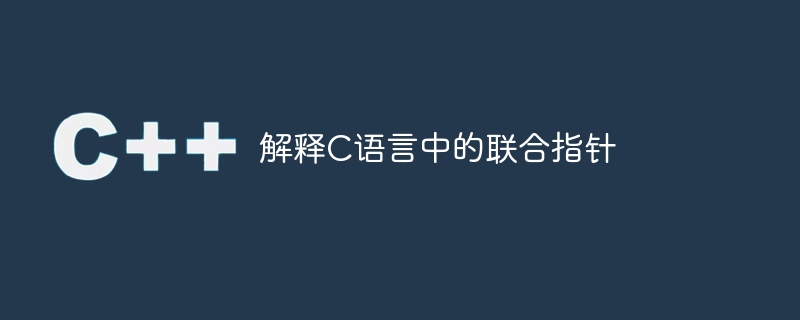Home >Backend Development >C++ >Explain union pointers in C language
Explain union pointers in C language
- 王林forward
- 2023-09-12 13:45:04725browse

A union is a memory location shared by multiple variables of different data types.
Syntax
The syntax of pointer to union in C programming is as follows -
union uniontag{
datatype member 1;
datatype member 2;
----
----
datatype member n;
};
Example
The following example shows the usage of union of structures.
union sample{
int a;
float b;
char c;
};Declaration of joint variables
The following is the declaration of joint variables. It has three types as follows −
Type 1
union sample{
int a;
float b;
char c;
}s;The translation of Type 2
is:Type 2
union{
int a;
float b;
char c;
}s;Type 3
The translation is:Type 3
union sample{
int a;
float b;
char c;
};
union sample s;When declaring a union, the compiler will automatically create the largest size variable type to accommodate the variables in the union.
Only one variable can be referenced at any time.
Use the same structure syntax to access union members.
The dot operator is used to access members.
The arrow operator (->) is used to access members using pointers.
We can use pointers to unions and use the arrow operator (->) to access members, just like a structure.
Example
The following program shows the usage of pointers to unions in C programming -
Live Demo
#include <stdio.h>
union pointer {
int num;
char a;
};
int main(){
union pointer p1;
p1.num = 75;
// p2 is a pointer to union p1
union pointer* p2 = &p1;
// Accessing union members using pointer
printf("%d %c", p2->num, p2->a);
return 0;
}Output
When the above program is executed, it produces the following results −
75 K
Example 2
Consider the same example with different inputs.
Real-time demonstration
#include <stdio.h>
union pointer {
int num;
char a;
};
int main(){
union pointer p1;
p1.num = 90;
// p2 is a pointer to union p1
union pointer* p2 = &p1;
// Accessing union members using pointer
printf("%d %c", p2->num, p2->a);
return 0;
}Output
When the above program is executed, it produces the following results −
90 Z
The above is the detailed content of Explain union pointers in C language. For more information, please follow other related articles on the PHP Chinese website!
Related articles
See more- C++ compilation error: A header file is referenced multiple times, how to solve it?
- C++ compilation error: wrong function parameters, how to fix it?
- C++ error: The constructor must be declared in the public area, how to deal with it?
- Process management and thread synchronization in C++
- How to deal with data splitting problems in C++ development

